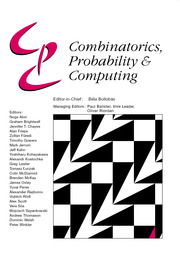No CrossRef data available.
Article contents
Tree universality in positional games
Published online by Cambridge University Press: 13 December 2024
Abstract
In this paper we consider positional games where the winning sets are edge sets of tree-universal graphs. Specifically, we show that in the unbiased Maker-Breaker game on the edges of the complete graph  $K_n$, Maker has a strategy to claim a graph which contains copies of all spanning trees with maximum degree at most
$K_n$, Maker has a strategy to claim a graph which contains copies of all spanning trees with maximum degree at most  $cn/\log (n)$, for a suitable constant
$cn/\log (n)$, for a suitable constant  $c$ and
$c$ and  $n$ being large enough. We also prove an analogous result for Waiter-Client games. Both of our results show that the building player can play at least as good as suggested by the random graph intuition. Moreover, they improve on a special case of earlier results by Johannsen, Krivelevich, and Samotij as well as Han and Yang for Maker-Breaker games.
$n$ being large enough. We also prove an analogous result for Waiter-Client games. Both of our results show that the building player can play at least as good as suggested by the random graph intuition. Moreover, they improve on a special case of earlier results by Johannsen, Krivelevich, and Samotij as well as Han and Yang for Maker-Breaker games.
MSC classification
Information
- Type
- Paper
- Information
- Copyright
- © The Author(s), 2024. Published by Cambridge University Press
Footnotes
The research of the fourth and sixth author is supported by Deutsche Forschungsgemeinschaft (Project CL 903/1-1)


